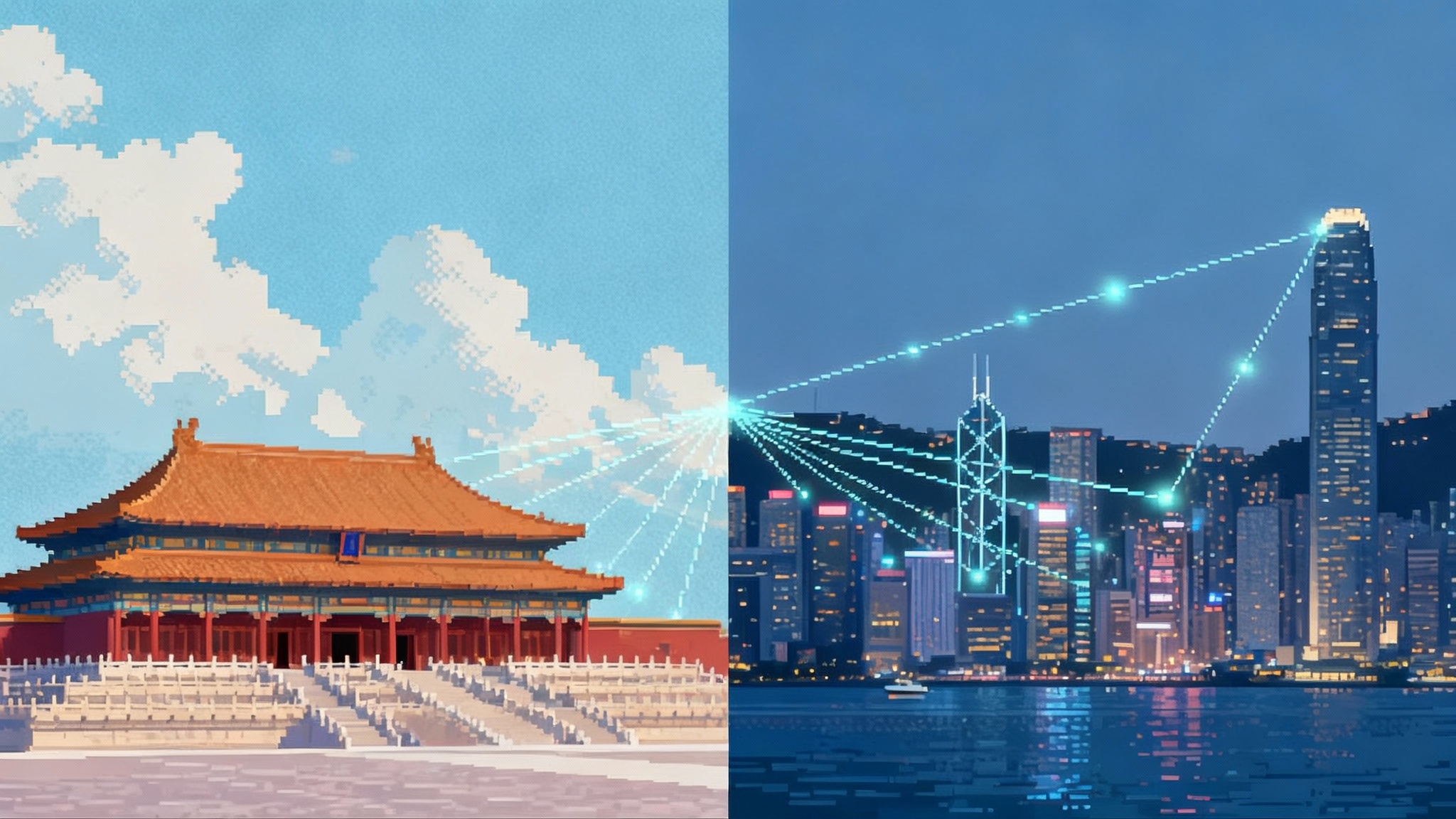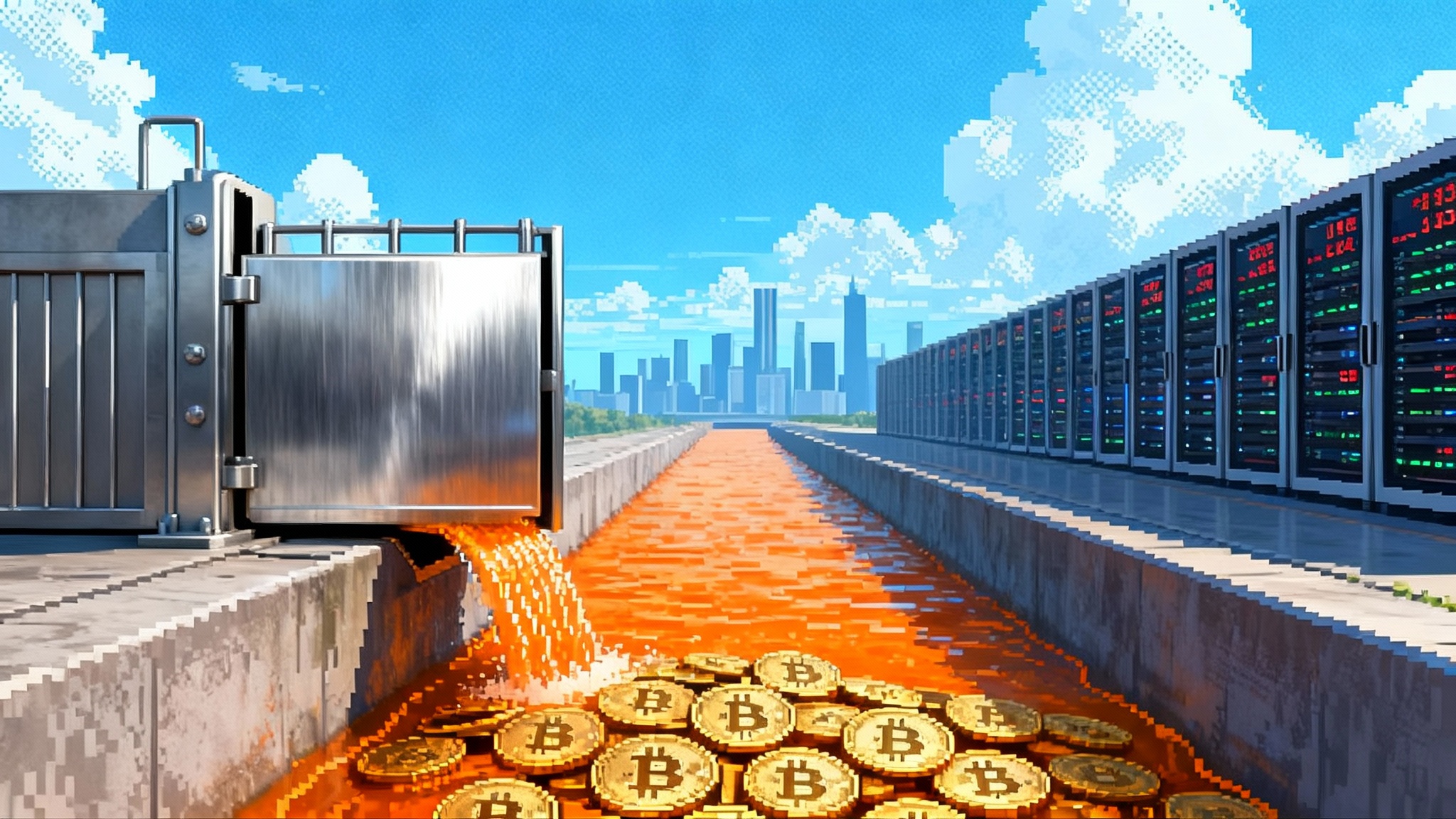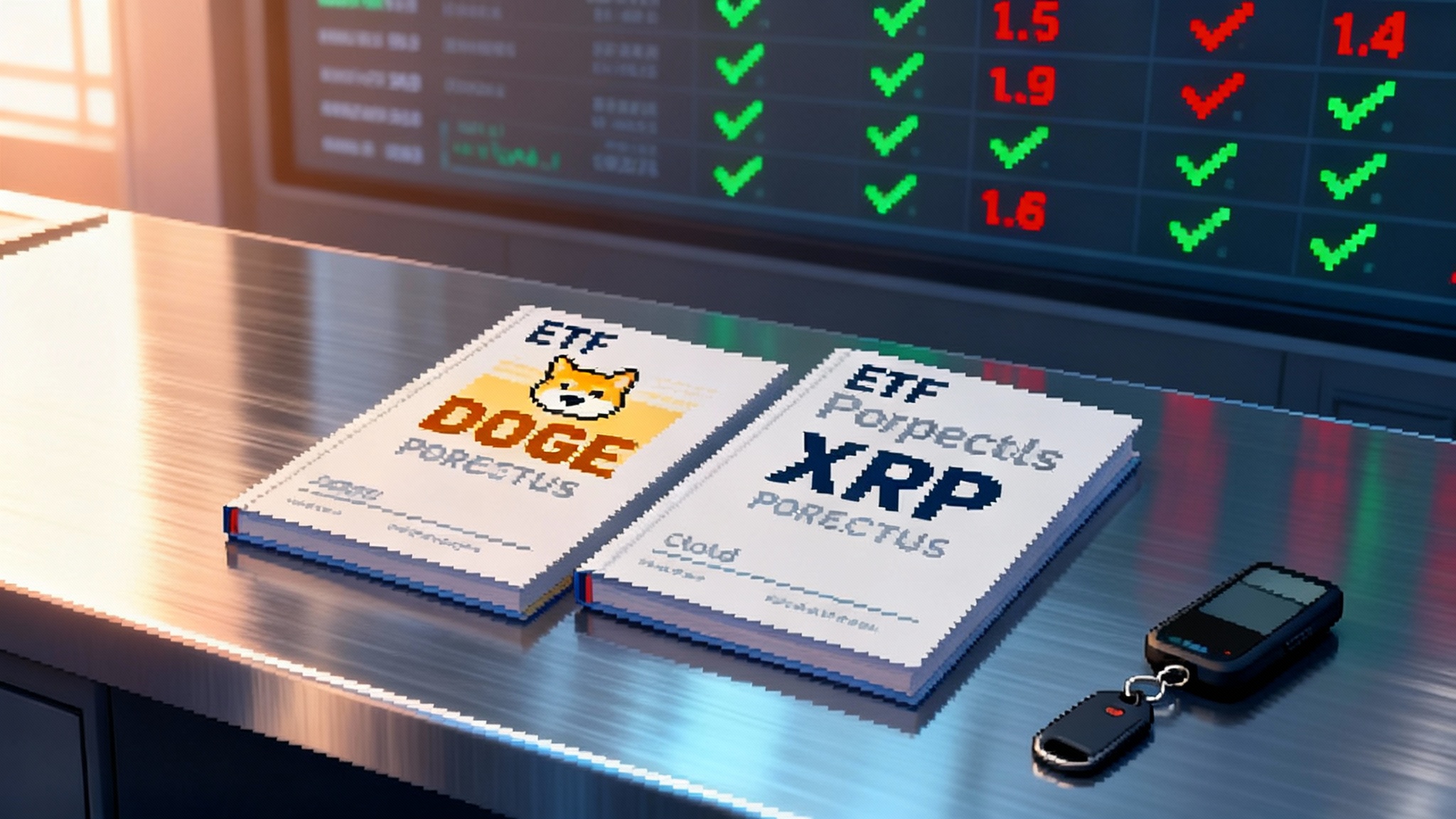Beijing’s pause tests Hong Kong’s tokenization ambitions
China’s securities watchdog reportedly asked mainland brokerages to halt RWA tokenization work in Hong Kong. Here is what the pause likely means for issuers, where liquidity shifts next, and how Project Ensemble and the new stablecoin regime shape the path forward.

The news and why it matters now
China’s securities regulator has reportedly asked several mainland brokerages to pause their real world asset tokenization activities in Hong Kong. The informal request, first reported on September 23, 2025, lands at a sensitive moment for Asia’s digital asset playbook and has cooled cross border deal pipelines in the city. The guidance is not a blanket ban across Hong Kong, but it touches a critical artery of issuers, arrangers, and distributors that rely on Chinese banks and brokers to originate, structure, or sell tokenized products. See the Reuters report on CSRC pause for the initial catalyst.
Under the hood, tokenization in Hong Kong has been moving from pilot to production. Banks, securities firms, and fintech issuers have been tokenizing money market funds, fixed income, and slices of real economy revenue streams inside regulatory sandboxes. Regulators have framed tokenized securities as traditional products with a digital wrapper, subject to familiar disclosure, custody, and distribution rules. That stance supported a steady pipeline of tokenized funds and structured products for professional and increasingly retail investors. Beijing’s pause collides with that momentum.
What the pause likely entails for brokers and issuers
Based on similar supervisory pause and assess moments, here is what the request most likely means in practice for mainland affiliated houses operating in Hong Kong:
- New issuance on hold: Chinese brokerages will likely suspend the origination and underwriting of new RWA token offerings, particularly those that depend on mainland balance sheets, client distribution, or risk approvals. That includes tokenized private credit, receivables, and asset backed deals tied to mainland operating companies.
- Freeze on marketing and onboarding: Sales teams may halt active marketing, investor onboarding, and roadshows for tokenized deals that are not yet in the market. Expect new client KYC flows for tokenized products to be paused at these firms.
- Reduced secondary activity: If house policies treat the guidance conservatively, dealing desks could scale down market making, repo, and lending against tokenized collateral that the firm originated or actively distributes. This is less clear for third party listings, but risk committees will lean cautious.
- Custody and wallet controls: Internal risk and tech teams are likely to tighten whitelists, adjust wallet policies, and revisit smart contract permissions for any tokenization stack operated or overseen by the brokerage or its affiliates.
- Case by case exceptions: Transactions linked to public sector pilots, green finance, or trade facilitation might still be reviewed, but they will face longer internal approvals and stronger demands for explicit regulatory comfort.
For non mainland issuers and service providers in Hong Kong, the pause is not an automatic stop sign. But it alters counterparties, timelines, and placement depth if Chinese houses were anchor distributors, co managers, or custodians for a deal. Issuers that counted on mainland distribution to fill books will need alternate channels.
How it intersects with Project Ensemble and stablecoin licensing
Hong Kong’s tokenization agenda has two pillars that matter here: Project Ensemble and the stablecoin licensing regime.
- Project Ensemble: This is the HKMA’s wholesale CBDC and tokenized money initiative designed to make tokenized asset settlement simpler, faster, and interoperable across banks. It includes an architecture community, a sandbox, and multiple use cases such as tokenized bonds, funds, and RWA revenue streams. Ensemble is the plumbing for delivery versus payment and payment versus payment on token rails inside Hong Kong’s regulatory perimeter. The pause does not shut Ensemble down. It does, however, limit near term participation of Chinese brokerages and banks in certain experiments and production pilots where they are key originators or settlement banks. That reduces network effects and risks fragmenting liquidity across separate pools.
- Stablecoin regime: On August 1, 2025, Hong Kong’s licensing framework for fiat referenced stablecoin issuers came into force, with application windows through late September and the HKMA signaling a cautious path toward initial approvals. The regime is the monetary foundation for compliant settlement tokens in Hong Kong’s markets. If you issue or actively market fiat referenced stablecoins in Hong Kong you need a license, and reserve, redemption, and disclosure standards are explicit. The tighter the stablecoin base, the more credible tokenized asset settlement becomes. See the HKMA’s notice on the implementation of the stablecoin issuer regime. For a U.S. policy parallel on how rulesets shape settlement assets, compare with how the GENIUS Act resets stablecoins.
The net effect is a push and pull. Market infrastructure and rules in Hong Kong continue to mature, but the mainland’s supervisory guidance slows one of the most important sources of issuance and distribution. That complicates the city’s bid to be Asia’s full stack tokenization hub.
Immediate winners and losers
Venue dynamics
- Hong Kong: Near term, issuance that relies on Chinese broker distribution or custody will slip to the right. Issuance that can rely on international banks, global custodians, and local Hong Kong asset managers may continue. Retail oriented tokenized funds that already have SFC authorization should see less disruption. But origination tied to mainland corporates becomes harder, and the secondary market loses depth where Chinese desks had been liquidity providers.
- Singapore: MAS Project Guardian already anchors a set of institutional pilots for tokenized funds, fixed income, FX, and collateral. If mainland houses retrench from Hong Kong tokenization, Singapore becomes the obvious routing point for Asian institutions that want regulated experiments with global banks as sponsors. Expect more VCC structures with tokenized units and more listings on bank operated digital exchanges.
- UAE: Dubai and Abu Dhabi have been clarifying tokenization rules, and Dubai’s VARA has brought asset referenced tokens into scope with a licensing playbook. Issuers with Middle East distribution or real asset pipelines may reroute first tranches there. The region will benefit if Asian originators want to keep momentum while the Hong Kong pipeline resets.
- EU and UK: Europe’s MiCA stablecoin regime is live for ART and EMT categories, and the UK’s Digital Securities Sandbox is open with FCA and Bank of England oversight. That translates into more predictable treatment for tokenized funds and Treasuries. European and UK venues gain appeal for global issuers who want legal certainty and passportable structures, even if Asia distribution remains a goal. For a U.S. comparison on how codified rules can unlock distribution, see what generic ETF rules unlock.
Protocol and product dynamics
- Tokenized Treasuries and cash equivalents: Big winners. They are already seeing institutional adoption and have clear legal and operational wrappers. If Hong Kong issuance slows, liquidity seeking safer yield will continue to flow to tokenized Treasury products listed or custodied in venues like Singapore, the U.S., or the EU, and to bank operated platforms.
- Tokenized private credit and trade finance: Near term losers, especially exposures originated by Chinese corporates or supply chains. Without mainland distributor support, underwriting spreads widen, and investors will demand more credit enhancement and better disclosure.
- Tokenized funds: Mixed. Retail authorized tokenized money market funds in Hong Kong likely continue, but the city may lose first mover advantage on tokenized multi asset and alternative funds if Singapore or the UK can onboard structures faster under their sandboxes.
Two scenarios for the next 90 days
Scenario 1: Brief cooling off
- Shape: The CSRC’s instruction functions as a supervisory time out to review risk controls, marketing, and cross border data or capital flows. It is not formalized in binding rules, and within weeks firms receive clarifications on allowed activities.
- Market effects: Deal timetables slip by one to two months, but the pipeline does not break. Issuers re sequence by pushing fund tokenizations and tokenized fixed income first and delaying private credit and RWA revenue share deals until there is clarity. Liquidity and custody arrangements rebalance toward non mainland banks in Hong Kong.
- Distribution: Mainland affiliated brokers resume selected roles with enhanced internal approvals. Global banks and Hong Kong only houses keep leading roles in pilots.
Scenario 2: Extended chill
- Shape: The request hardens into formal guidance or de facto firm policy. Mainland brokers keep tokenization activity on hold through year end while regulators map boundaries on product scope, investor segments, onchain settlement assets, and use of public versus permissioned chains.
- Market effects: Issuance migrates. Tokenized Treasuries, funds, and structured notes shift to Singapore or the UK for primary issuance while staying accessible to Hong Kong professional investors through offshore accounts. Tokenized private credit originations tied to Chinese corporates pause or move to UAE vehicles focused on non mainland borrowers.
- Liquidity and custody: Chinese bank affiliated custody dries up for new tokenized positions. Global custodians and Hong Kong independent trust companies gain share. Market makers reduce inventory of Hong Kong originated RWAs, and spreads widen.
- Listings and settlement: Listings on Hong Kong platforms slow, and more issuers elect to list tokens on bank operated exchanges in Singapore or on regulated MTF like venues in the UK sandbox. Onchain settlement leans more heavily on USD stablecoins or tokenized deposits outside the mainland nexus while Hong Kong’s wCBDC experiments stay in sandbox mode.
- Cross border distribution: Southbound distribution channels were already narrow for tokens. An extended chill cements the separation, and issuers plan Asia distribution without mainland retail or mass affluent flows.
A practical issuer and investor playbook
Compliance and documentation
- Treat the pause as binding until told otherwise. Document board level decisions and risk committee minutes that show a controlled response. Tighten marketing disclosures, update offering documents to detail token design, smart contract upgrade controls, whitelisting logic, and redemption waterfalls.
- Map everything that touches the mainland. Identify exposure points such as onshore affiliates involved in underwriting, mainland investor onboarding, cross border data, and tech dependencies. Design clean room processes for Hong Kong or offshore operations.
Venue diversification
- Dual track issuance. Prepare Hong Kong and Singapore or UK variants of your structure at term sheet stage. Keep chain agnostic deployment templates that can move between permissioned EVM chains, bank operated ledgers, and public networks where regulators are comfortable.
- Custody split. Qualify at least two custodians in different jurisdictions and two transfer agents or registrars capable of token ledger maintenance. Prefer providers with established playbooks for tokenized fund units and debt.
Disclosure upgrades
- Go beyond minimums. Provide smart contract audit summaries, admin key policies, incident response runbooks, and detailed redemption mechanics. For private credit, include standardized pool stratifications, borrower concentration metrics, and triggers for cash sweeps or stop issuance.
Contingency funding
- Plan for slower books. Build backstop facilities or anchor orders from non mainland accounts to de risk execution. For tokenized funds, set cash buffers or committed liquidity lines that can meet redemptions if a distributor pauses.
Investor tactics
- Stress test portability. If a venue change becomes necessary, can you hold positions through a change of listing, custodian, or registrar without tax or legal surprises. Read the transfer restriction clauses and the forced migration mechanics.
- Prefer settlement assets with clear rules. Favor tokens that settle in licensed fiat referenced stablecoins, tokenized deposits, or money fund tokens where regulators have published standards. That reduces closure risk if a venue tightens rules. For a broader look at near term flows, see the September payout liquidity wave.
Milestones to watch next quarter
- Clarity from Beijing or the firms: Any formal CSRC notice or firm specific statements that define scope, product categories, and investor segments that remain permitted. Absence of clarity by late October would tilt the market toward the extended chill scenario.
- HKMA and SFC coordination signals: Look for cross regulator statements that reaffirm tokenized securities treatment, custody expectations, and the Ensemble roadmap. If the HKMA accelerates Ensemble sandbox use cases tied to local banks or publishes new technical standards, that is a confidence signal.
- Stablecoin licensing progression: With the regime effective from August 1, 2025 and initial application windows closing by late September, watch for HKMA updates on application volumes or shortlists. Any public movement on the first applicants will steady settlement expectations even if licenses are only granted next year.
- Venue reaction: Track whether bank operated exchanges in Singapore or the UK sandbox announce listings of tokenized funds or Treasuries that were previously flagged for Hong Kong. Likewise, announcements from UAE platforms about RWA listings backed by Asian originators would confirm rerouting.
- Product pipeline tells: If tokenized private credit and trade finance deals in Hong Kong go quiet while tokenized cash equivalents remain active, it signals a selective freeze rather than a comprehensive retreat.
The bigger picture
For two years, Asia has pushed to turn tokenization from proof of concept into everyday market infrastructure. Hong Kong built rules for tokenized securities and funds, launched a settlement sandbox with a wholesale CBDC layer, and stood up a licensing regime for fiat referenced stablecoins. Beijing’s pause is the first real test of how a city level tokenization strategy coexists with mainland priorities on capital flow, market integrity, and digital money.
In a brief cooling scenario, Hong Kong proves that Ensemble, stablecoin licensing, and SFC product rules can handle institutional scale issuance with robust investor protection. In an extended chill, the region may fragment. Singapore, the UAE, and European hubs will absorb more issuance and secondary trading, while Hong Kong focuses on tokenized products without mainland nexus and on building the pipes that make settlement safer.
Either way, issuers and investors should manage to a world where tokenization is no longer a single venue bet. It is a portfolio of venues, chains, and settlement assets, selected deal by deal. The race is still on. The roadmap just gained a few more forks.








